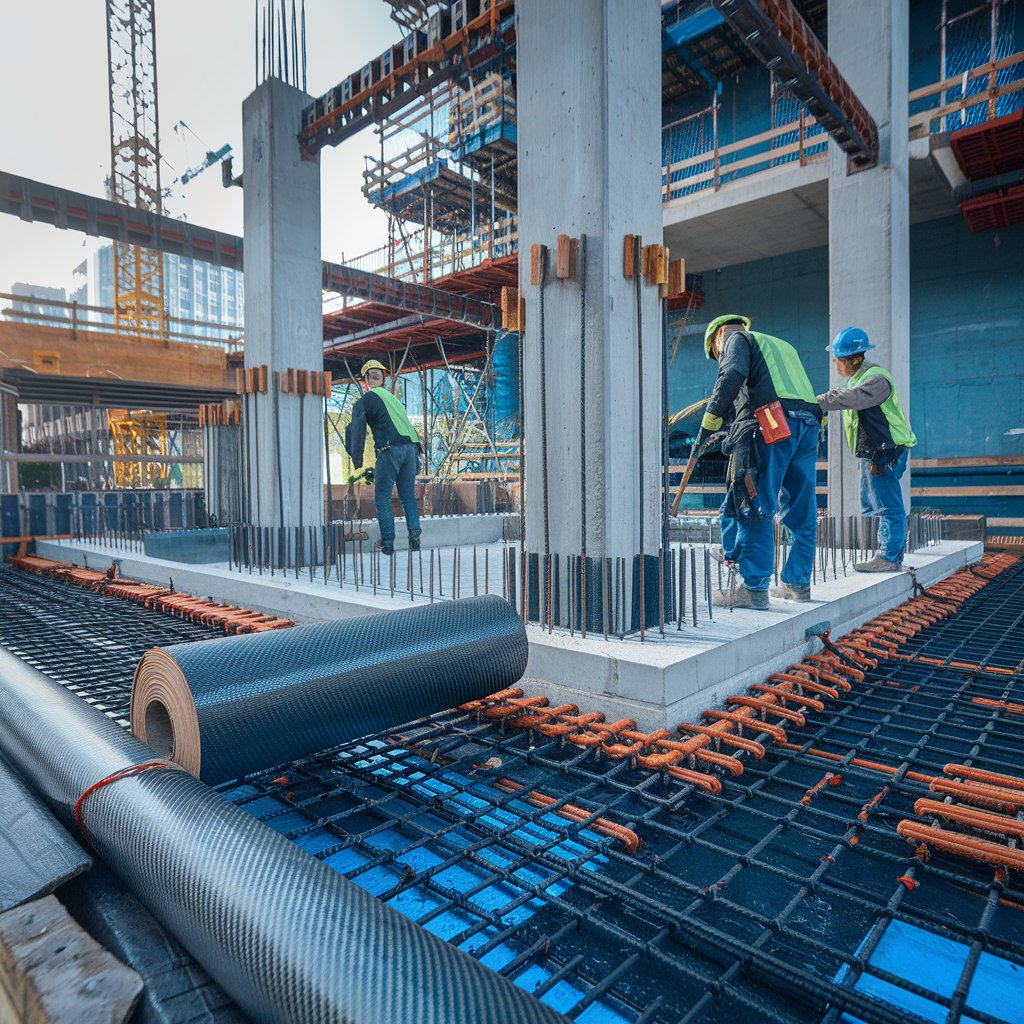MISHub QI
Use of Carbon Fibers in Concrete
Use of Carbon Fibers in Concrete
The use of carbon fibers in concrete has emerged as an innovative solution to increase the strength, durability and performance of structures in civil engineering. This study explores the types of carbon fibers, their benefits, limitations and practical applications, focusing on technical aspects and recent advances that arouse the curiosity of professionals and researchers.
Types of Carbon Fibers Used in Concrete
Carbon fibers are classified according to their form of application and function in structural reinforcement:
Dispersed Short Fibers
These fibers are mixed directly into the concrete matrix to improve its mechanical properties, such as crack resistance and toughness.
- Application : Industrial floors, prefabricated elements and structures subject to impacts.
Carbon Fiber Meshes and Fabrics
Mainly used to reinforce existing structures, these meshes or fabrics are applied to concrete surfaces and impregnated with resins to improve flexural and compressive strength.
- Application : Reinforcement of beams, pillars and slabs in buildings and bridges.
Carbon Fiber Profiles and Bars
These elements are used as substitutes for traditional steel reinforcement, providing greater resistance to corrosion and lower self-weight.
- Application : Structures exposed to aggressive environments, such as coastal or industrial areas.
Benefits of Using Carbon Fibers in Concrete
The use of carbon fibers in concrete offers significant technical and operational advantages:
- Carbon fibers increase the tensile and flexural strength of concrete, significantly reducing the risk of cracking.
- Unlike steel reinforcements, carbon fibers are immune to corrosion, even in environments with high humidity or exposure to chlorides.
- With a density of approximately 1.60 g/cm³, carbon fibers reduce the weight of structures, facilitating transportation and assembly.
- Materials such as carbon fiber fabrics are easy to install, allowing for quick reinforcements in existing works without the need for major interventions.
- The greater durability of carbon fiber reinforced structures reduces the need for maintenance and rehabilitation, contributing to environmental sustainability.
Limitations and Technical Challenges
Despite the advantages, the use of carbon fibers in concrete presents challenges that require attention:
- The price of carbon fibers is significantly higher than that of steel, which may limit their adoption in large-scale projects.
- One-off impacts or application failures can compromise structural integrity, requiring regular inspections and specialist maintenance.
- Fixing carbon fibers requires the use of epoxy resins, which can be sensitive to variations in temperature and humidity during application.
- The application and inspection of carbon fibers requires qualified professionals and specific equipment, increasing indirect costs.
Use of Carbon Fibers in Concrete in Mozambique
In Mozambique, the application of carbon fibers in civil construction is still limited, but it has significant potential for the future. Some factors that influence this reality include:
· Carbon fibers and associated materials, such as epoxy resins, are still imported and have a high cost, making their use restricted to specific and large-scale projects, such as road infrastructure and reinforcement of institutional buildings.
· The high humidity in some regions of Mozambique makes carbon fibers an advantageous alternative to replacing metal reinforcement, reducing problems related to corrosion. In addition, their lightness can facilitate construction in remote areas.
Conclusion
The use of carbon fibers in concrete represents a significant advance in civil engineering, providing lighter, more durable and resistant structures. However, the high cost and the need for specialized labor are still challenges to be overcome for a wider adoption of the technology. In Mozambique, the application of this material can bring important benefits, especially for the rehabilitation of infrastructures and for constructions in environments subject to corrosion, but it still faces economic and technical barriers that need to be overcome for a more effective implementation.
Bibliographic References
VIAPOL . Manual of Reinforcement of Reinforced Concrete Structures with Carbon Fibers. Available at: https://www.viapol.com.br/media/97576/manual-fibra-de-carbono.pdf . Accessed on: February 7, 2025
Ferreira NFM (2008). INFLUENCE OF FIBRE CHARACTERISTICS ON CONCRETE PERFORMANCE. Available at: https://repositorio-aberto.up.pt/bitstream/10216/58165/1/000129824.pdf . Accessed on: February 10, 2025
MOLINS. Properties of carbon fiber: its use in structural reinforcement. Available at: https://www.molins.es/construction-solutions/pt/sistemas-de-reforco-estrutural/propriedades-da-fibra-de-carbono-sua-utilizacao-no-reforco-estrutural/ . Accessed on: February 11, 2025
Author: Eng. Francisco Quisele Jr.
Date of publication : 02/13/25
Share


